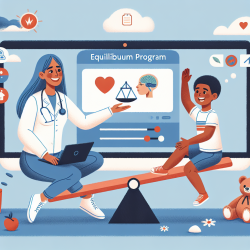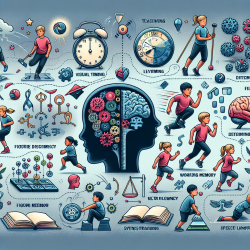As a speech-language pathologist, one of our primary goals is to ensure that children with communication disorders receive the best possible interventions to support their development. A recent study published in the Canadian Journal of Speech-Language Pathology and Audiology provides valuable insights into the narrative production abilities of children with Autism Spectrum Disorder (ASD) and Specific Language Impairment (SLI). This research highlights key areas of vulnerability and suggests data-driven strategies for improving outcomes in these populations.
The study by Colozzo, Morris, and Mirenda (2015) involved 36 children aged 6 to 10 years, divided into three groups: children with ASD, children with SLI, and typically developing (TD) peers. The researchers examined the children's ability to produce narratives from pictures, focusing on productivity, content, and form. The findings revealed several critical points:
- Children with ASD had higher rates of grammatical errors and more difficulties in areas requiring perspective-taking abilities compared to children with SLI.
- Both clinical groups (ASD and SLI) performed below their age-matched TD peers in most measures, highlighting the need for targeted interventions.
- Referencing, relevant content, and mental state language were identified as particularly challenging areas for children with ASD.
These results suggest that narrative production tasks can be a valuable tool for assessing language and communicative abilities across multiple dimensions. By identifying specific areas of weakness, speech-language pathologists can set targeted intervention goals that aim to improve communicative competence broadly.
Based on the study's findings, here are some data-driven strategies to enhance outcomes for children with ASD and SLI:
1. Focus on Perspective-Taking Abilities
Children with ASD, in particular, struggle with tasks that require understanding and taking the perspective of others. Incorporating activities that explicitly teach perspective-taking can help improve their narrative skills. Role-playing, social stories, and using visual aids to depict different viewpoints can be effective techniques.
2. Address Grammatical Errors
Both children with ASD and SLI showed higher rates of grammatical errors. Structured language interventions that focus on grammar, such as sentence combining exercises and explicit teaching of grammatical rules, can help reduce these errors and improve overall language proficiency.
3. Enhance Referential Cohesion
Clear referencing is crucial for coherent narratives. Activities that emphasize the use of appropriate pronouns, noun phrases, and connectors can help children improve their ability to maintain referential cohesion in their stories.
4. Develop Mental State Language
Mental state language, including terms that describe emotions and cognitive states, is essential for rich and engaging narratives. Incorporating activities that encourage children to use and understand mental state language, such as discussing characters' feelings and thoughts in stories, can enhance their narrative abilities.
By focusing on these key areas, speech-language pathologists can provide more effective interventions that address the specific needs of children with ASD and SLI. This data-driven approach ensures that our practices are grounded in research and tailored to create the best possible outcomes for the children we serve.
To read the original research paper, please follow this link: Canadian Journal of Speech-Language Pathology and Audiology.










